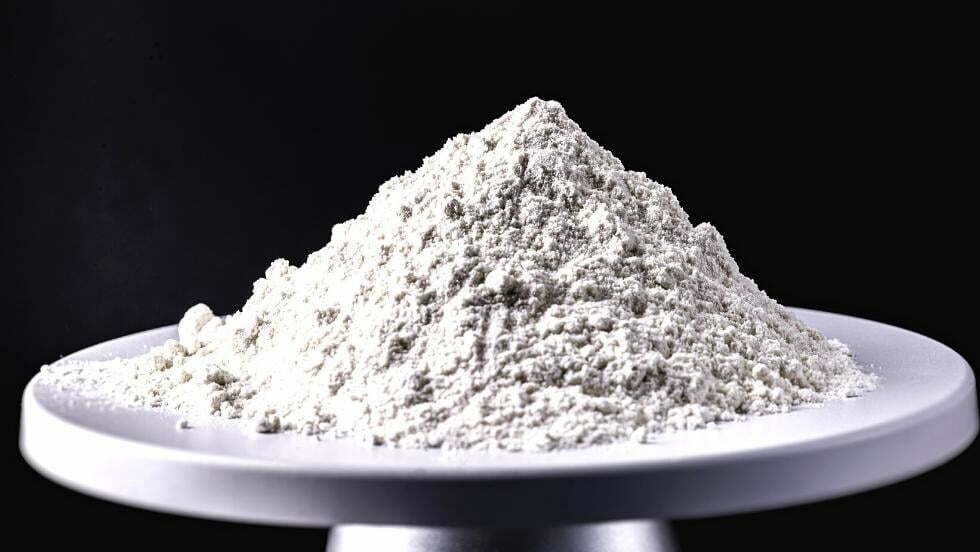Known also as china white clay, we can find kaolin in a wide range of industrial applications like paper, ceramics, or paints and coatings. There are more emerging trends in non-traditional sectors that use kaolin as raw materials, such as agriculture, pharmaceuticals, and cosmetics. Those have led to a question, how much is kaolin worth?
Kaolin in a Nutshell
What is kaolin? Kaolin is a soft white clay in platy or flaky layers of the mineral called kaolinite, an alumina silicate created by hydrothermal weathering igneous rock, like granite.
Some of its properties are chemically inert, non abrasive, and other favorable characteristics, making it highly desirable as a commodity for applications in diverse industries, including paper, ceramics, paints and coating, fiberglass, plastics, rubber, agriculture, pharmaceuticals, concrete, and cosmetics.
Kaolin Global Market

A. The Supply and Demand
The recent and ongoing pandemic has affected the global economy due to the halt of production, trade activities, and disruption of supply chains. Similarly, the kaolin market during the pandemic has experienced a decline in demand compared to 2019.
Fortunately, the latest analysis has estimated that the global kaolin market will experience a readjusted size of growth of 3.9% to up to 4% CAGR in the upcoming forecast years (2022 – 2028).
Several main driving factors for the kaolin market growth are the increased demands from end-user industries like paper, ceramics, paints and coatings, sanitaryware, cosmetics, and medicinal or pharmaceuticals.
Back to the question, how much is kaolin worth? We can also look at the application of this white clay in various industrial sectors.
B. Kaolin in Paper Industry
The 2017 data showed that the paper industry was one of the major consumers of kaolin, accounting for over 40% of the market share worldwide. In this industry sector, kaolin serves as a raw material excellent in increasing gloss, smoothness, brightness, and printability due to the paint absorbency (coating).
C. Kaolin in Ceramic Industry
Kaolin is a common component in all sorts of earthenware or pottery. Its chemical properties are good at providing a high level of consistency, durability, and smoothness. Therefore, kaolin is a significant raw material in the production of ceramic tableware, sanitaryware, tiles, fiberglass, big surfaces, and electrical porcelain.
The kaolin market is projected to grow due to the high demand for ceramic tiles in the construction sector of densely populated and emerging regions.
D. Kaolin in Paint, Rubber, and Plastic Industries
The paint industry uses kaolin because it contains a high level of silica and alumina, as a cheaper alternative than titanium dioxide. Kaolin is an important element to increase pigment brightness and manage texture for coatibility and dispersion.
Kaolin is a substantial filler in various rubber-based products and a strengthening agent to improve durability and strength. Meanwhile, in the plastic industry, kaolin is used as an infrared absorber in agricultural films and an anti-blocking agent in PET and polyethylene films.
E. Kaolin in Other Emerging Sectors
Other emerging market segments for kaolin worth are fiberglass, pharmaceuticals, and cosmetics.
Kaolin Concentration Worldwide
After the first discovery of kaolin or Kao-ling in China (1700), the 2001 data about the production of kaolin in Asia reported an estimated 5 million tons of this china white clay. The amount was produced in the regions from India in the west through China, Korea, and Japan in the Far East. Other prominent countries that still produce kaolin in this region are Indonesia, Korea, and Thailand.
China is one of the largest producers of kaolin worldwide. The other major countries where kaolin deposits are commonly mined are the United States, France, Czech Republic, England, and Germany.
Kaolin Historical and Forecast Worth
Kaolin’s worth and pricing have gone through several changes and rises. They are attributable to the increase in demand, ensuring long-term stability and continued investment, fulfilling regulatory and production increases, rising labor costs, and closing of several kaolin mines.
The future growth insight of the kaolin market by region has projected Asia-Pacific as the most crucial market and the most lucrative as it keeps expanding due to improved economic conditions. As for application, the ceramic industry will play a significant role in the growth of the kaolin market.
We ultimately figure out how much is kaolin worth in the global market. Kaolin offers a quite bright future when other minerals will not make it. In the Asia-Pacific region, PT. Yukami might be one of the leading companies that supply high-quality kaolin for various industrial purposes.


Recent Comments